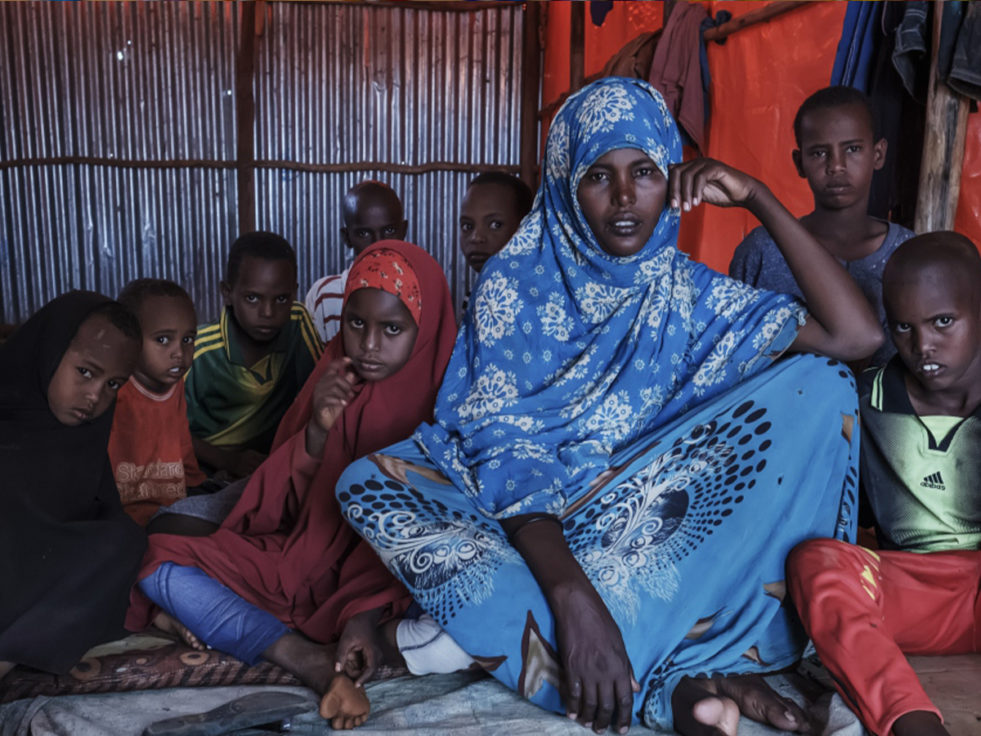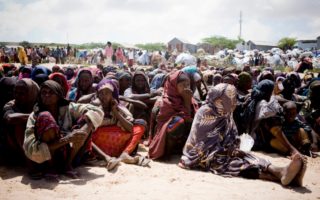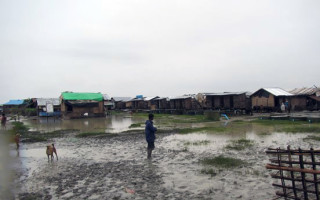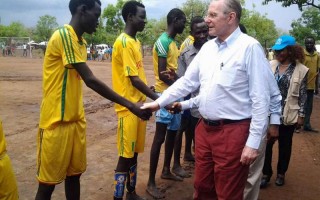When drought killed most of Barwako Noor Abdi’s cows and goats eight years ago, she had no choice but to abandon her home in Somalia’s parched Gedo region and seek help elsewhere in a country suffering from decades of insecurity.
When the next major drought hit in 2016/17, she found she could not even sell her surviving animals as there was no longer demand for them.
Then this year, as the rains failed once again, she had no option but to sell up the little piece of land that remained to her, and flee across the border to Ethiopia.
“There was nothing we could do to survive,” the 38-year-old said as she tended to the youngest of her nine children, a toddler crying for milk. “I left because of my children.”
With already poor security and now a worsening drought, more than 5,000 Somalis have sought refuge in Ethiopia so far this year – about four times the total number that crossed the border in search of safety in 2018.
“The river is dry and there is no rain … Al-Shabab force us to produce what we did not have.”
More families are expected to flee to southern Ethiopia in coming months, as the Horn of Africa country faces its worst harvest since the 2011 famine.
The fragile situation is being aggravated still further by militant group Al-Shabab, which determines what crops farmers can grow and levies “taxes” – extortion payments — on already struggling rural communities.
“There was a time when we would cultivate the farms. The river would rise, and it would flow and we survived,” said Shalle Hassan Abdirahman, who arrived at UNHCR’s Dollo Ado reception centre in eastern Ethiopia after a three-day journey from Somalia’s Lower Juba region.
“We planted maize, tomatoes, sesame and other things along the river. Now, the river is dry and there is no rain. What is worse is that Al-Shabab force us to produce what we did not have,” he added.
The 53-year-old farmer said he used to grow and sell tobacco until Al-Shabab banned it. Despite the loss to his income, he said he faced constant harassment from the group to pay a “tax” of US$1,500 — a sum that he could ill afford.
He is not alone. Several Somali families in Dollo Ado said communities must either pay Al-Shabab or hand over their children for military training. Like many newly arrived refugees, Barwako voiced fears that her sons would be forcibly recruited by Al-Shabab if they stayed in Somalia much longer.
“My children are growing and are also at risk of being taken away as fighters. That’s why I came here so they can go to school so their future can be better,” she said.
UNHCR, the UN Refugee Agency, is increasingly concerned about the risk of climate-related displacement of people, either within their own countries or across borders.
The Global Compact on Refugees, adopted by an overwhelming majority in the UN General Assembly in December 2018, directly addresses this growing concern. It recognizes that ‘climate, environmental degradation and natural disasters increasingly interact with the drivers of refugee movements.’
“We are receiving reports from new arrivals about cattle loss, scarcity of water.”
Muhammad Harfoush, Protection Officer at UNHCR’s Melkadida sub-office, said insecurity and worsening drought were clearly driving the spike in new arrivals to Ethiopia: “Security remains their strongest concern in Somalia but also, the drought is affecting everybody.
“We are receiving reports from new arrivals about cattle loss, scarcity of water, inability to move around to look for water. Life is becoming very challenging.”
The Dollo Ado reception centre lies just three kilometres from the border with Somalia. With the increased arrivals, sometimes as high as 80 people per day, there is not enough space to accommodate everyone. Families like Shalle’s are camped out on beds that have been pushed against the outer walls of the centre while they await registration and relocation to one of Melkadida’s five refugee camps.
Other families like Barwako’s are being housed temporarily in the grounds of a school run by one of UNHCR’s partners, World Vision, in Bur Amino.
The shortage of available shelters is a major challenge for UNHCR, which plans to provide more shelters to accommodate the growing number of refugees arriving from Somalia.
Despite the overcrowding in the Dollo Ado reception centre, Shalle has found some solace since reaching Ethiopia.
“I have been sleeping well since I arrived,” he said.
The UN will host the 2019 Climate Action Summit in New York on 23 September to address the challenge of a changing climate. UNHCR is joining the appeal, calling for urgent international action to prevent and mitigate climate-induced displacement.
Originally published by UNHCR on 20 September 2019






